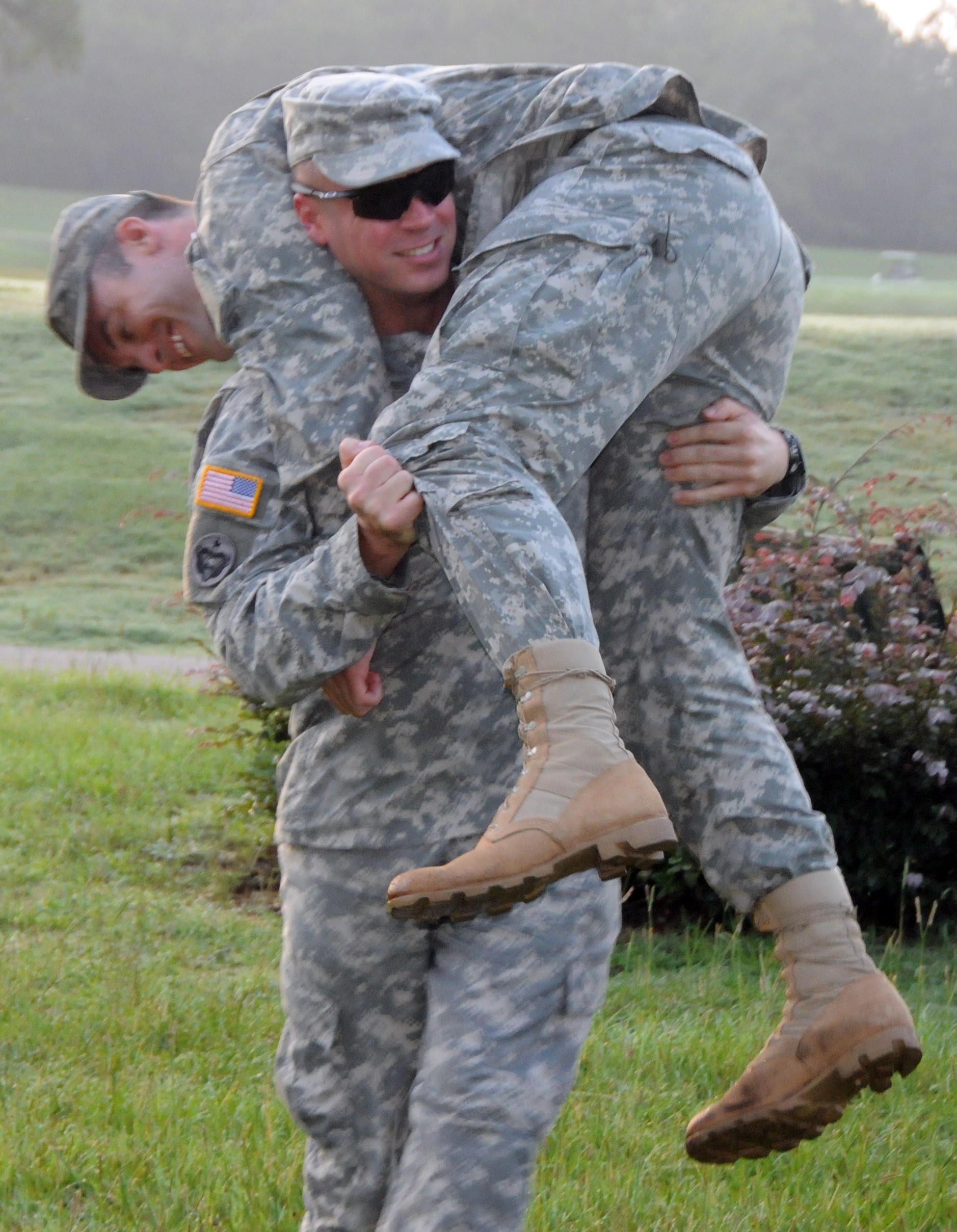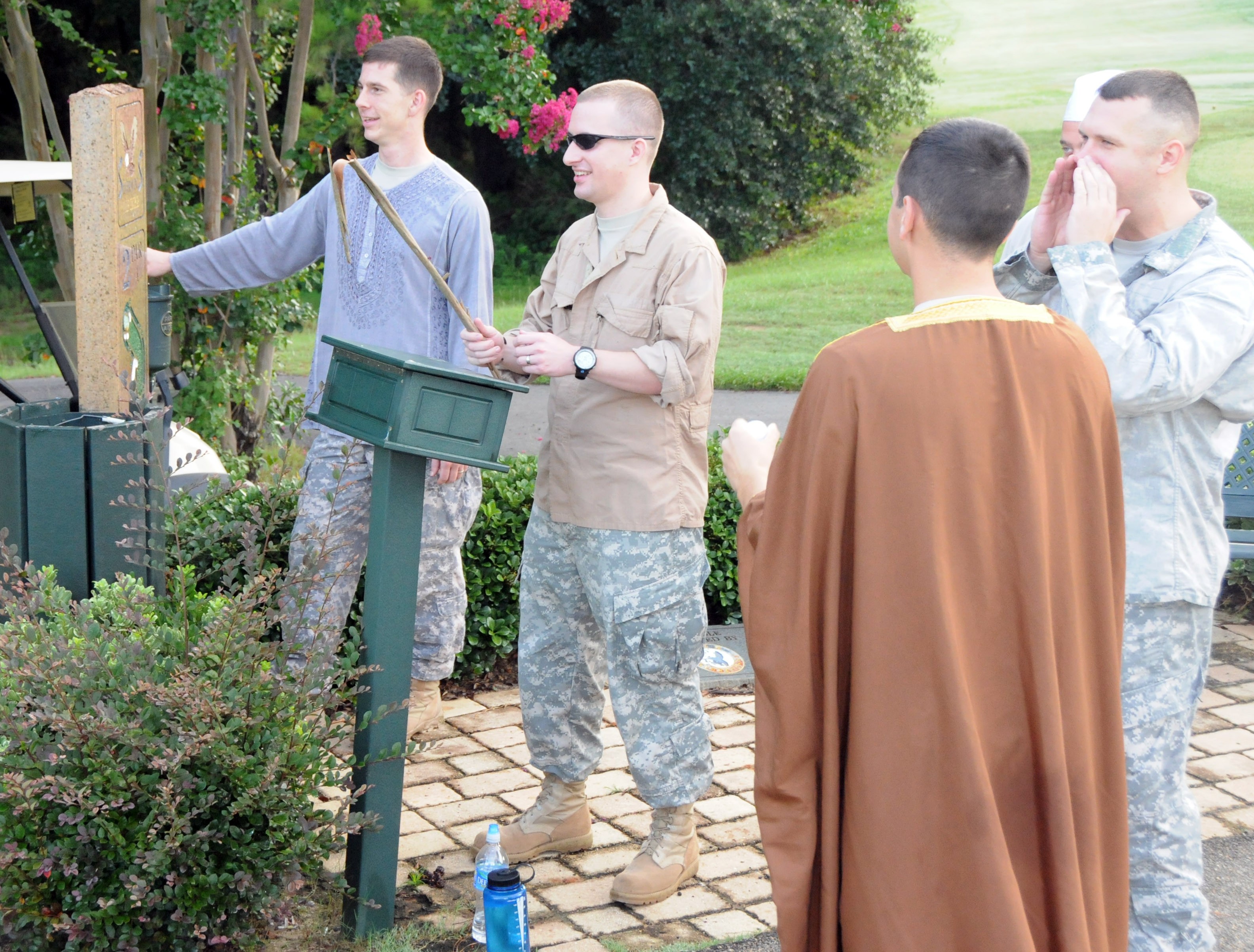FORT RUCKER, Ala. -- Members of the Aviation Captains Career Course got acclimated with simulated improvised explosive devices at Silver Wings Golf Course, July 22.
"Devices" were placed around the course as part of an exercise meant to give the captains a taste of what dealing with ground-level threats could be like.
AVC3 students divided into teams and drove around SWGC in golf carts in groups of seven to eight to simulate convoy travel.
As teams approached each situation, an exercise supervisor would let them know when or if they accidently tripped a device. Students also took turns standing in as civilians to better simulate a real-world scenario.
The live exercise was the final part of an IED training course that involved three days of classroom training prior to the live exercise, said Capt. Todd Van Dine.
Van Dine helped organize the training here because he has previous experience with it as an observer controller at the National Training Center, Fort Irwin, Calif., and thought it could be useful to Aviators for a variety of reasons.
"Most of the time, the guys in the helicopters aren't going to be part of the convoy on the ground, but giving them a better idea of what the convoy might go through can give them tools to better assist in certain situations," he said. "For example, it might take a while to clear a building and a pilot might wonder what's taking so long, but with this training they can have a better idea of what kind of time frame someone might need in order to accomplish a task."
Van Dine said the training here was a scaled-down version of the kind used in California. No explosions actually happened at SWGC.
"At (Fort Irwin), you would have thought you were in Afghanistan or Iraq because of the level of detail the crews put into the training," he said. "There are Hollywood special effects (people) working there and they make it feel very much like the real thing."
Here, Aviators still got a taste of what being in the field might be like on the ground. Many had experienced combat prior to the training, but few had seen it from the ground level.
"I've been in Afghanistan before, but I was a (CH-47 Chinook) pilot," Capt. Paul Flanigen said. "Getting out of the classroom and into the field was a huge benefit for me. Nothing beats hands-on training."
Capt. Michah Digrezio, a UH-60 Black Hawk pilot, agreed with Flanigen about the usefulness of training outside the confines of a classroom.
"This really gave us a chance to apply what we've learned," he said. "There's only so much you can get from a Power Point presentation."
At the conclusion of the exercise, participants offered suggestions on how to improve the training and said they hope it continues as a part of the AVC3 curriculum.
"We're going to do another one of these and utilize some of the suggestions that were brought up," Van Dine said. "I think (this exercise) went very well."




Social Sharing